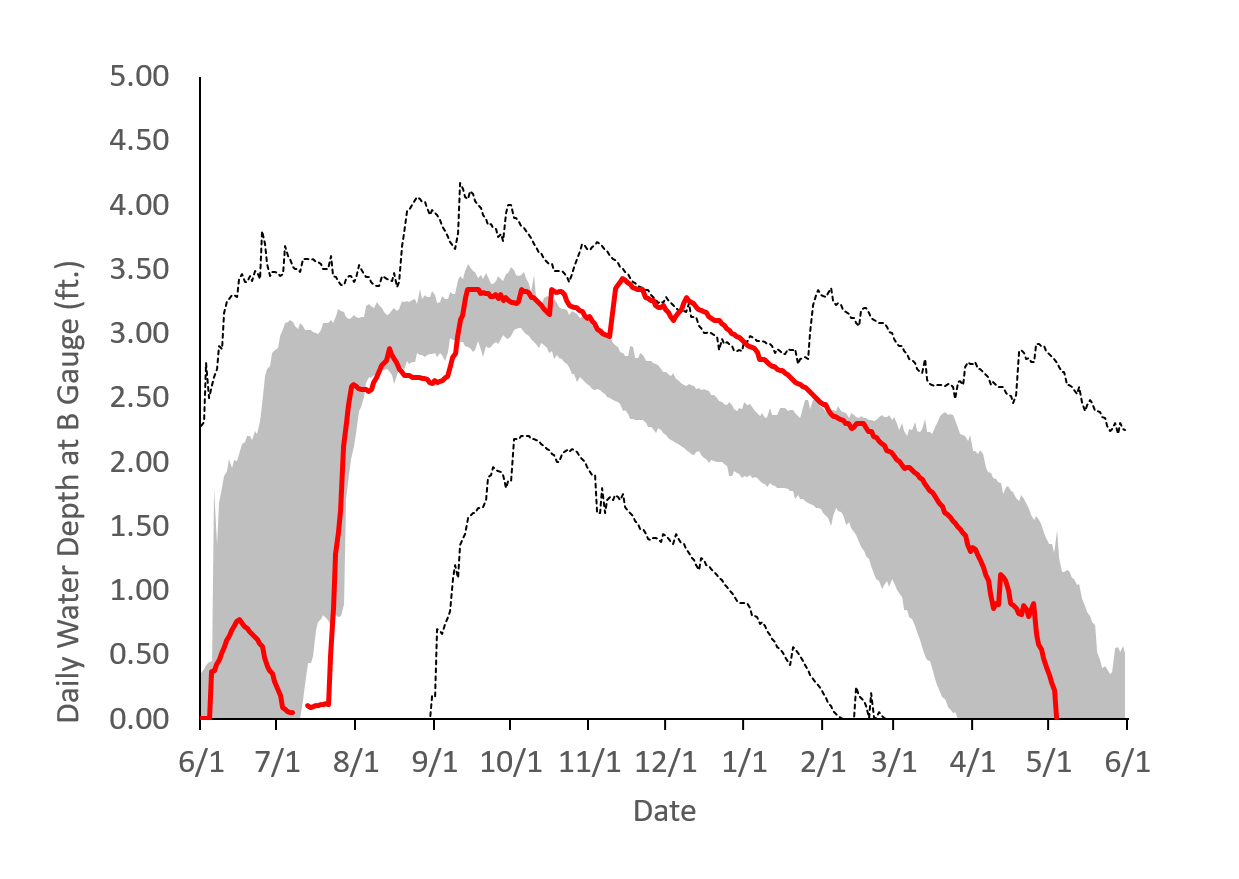Research and conservation staff assemble highlights from their fieldwork each month. Here are some reports from May 2021.
Land Management
- Hardwoods treatment for both CSS and Panther Island completed for the season.
- Transitioning to predominantly treating grasses and Scleria lacustris (popcorn sedge)
- Some broadleaf species continue to be treated as able on Panther Island
- Will treat hardwoods as needed
Research
- Alex Meinders was hired to fill the vacant Research Technician position and will begin on 5/17.
- Jacob has received his drone pilot license and is using the new drone to collect data. Initially, it will be used to augment mapping efforts and collect land coverage data for the marsh and prairie restoration project. New programs will follow as we explore the utility of this valuable tool.
- Wood Stork chicks are now visible in the Corkscrew colony. The total number of nests is quite low (est. <30) but chicks were seen in nests during the monitoring flight on 5/4/21. Nesting is also underway (with chicks in nests) at BC-29, Lenore Island, and Caloosahatchee East (**need to confirm WOST at CE)
Wildlife sightings
- Several Caracaras were seen near this year's Marsh and Prairie restoration work
- Florida Panther spotted along Fish Farm Road in Sect. 15
- Alligators eating invasive catfish on Panther Island
- Female Wood Duck on Panther Island
Hydrology update

WY21 vs historic (57-99)

WY21 vs current (00-pres)
Interpretation
In our last month of the dry season, water levels are predictably low and aquatic prey are concentrated in remaining pools of surface water. These pockets of water are an invaluable resource for our wildlife, from alligators to raccoons to semi-aquatic snakes. This is also prime feeding time for wading birds, especially those caring for chicks. Once the rainy season returns and surface water begins to rise it will become very difficult for wading birds to fledge their remaining chicks. We continue to track water levels below ground at the B gauge.
RAINFALL

We recorded 2.89” of rainfall in April 2021 (=within ‘normal’ range). Cumulative water year rainfall is also in the average range (we’ve received 55.95” since June 1, 2020).



